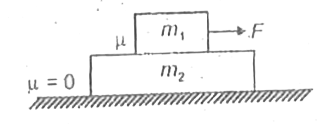The maximum value of flow of liquid for which the motion remains streamlined is known as______velocity.
To solve the question regarding the maximum value of flow of liquid for which the motion remains streamlined, we can follow these steps:
1. Understanding Fluid Flow Types:
- There are two primary types of fluid flow: laminar (or streamlined) flow and turbulent flow.
- Laminar flow is characterized by smooth, orderly layers of fluid sliding past one another, while turbulent flow involves chaotic, irregular movement.
2. Reynolds Number:
- The flow regime of a fluid can be determined using the Reynolds number (Re), which is a dimensionless quantity.
- The Reynolds number is calculated using the formula:
Re=ρvDμ
where:
- ρ = density of the fluid,
- v = velocity of the fluid,
- D = characteristic length (like diameter of a pipe),
- μ = dynamic viscosity of the fluid.
3. Critical Values of Reynolds Number:
- For flow in a pipe:
- If Re<2000, the flow is laminar (streamlined).
- If Re>4000, the flow is turbulent.
- If Re is between 2000 and 4000, the flow is in transition.
4. Identifying Critical Velocity:
- The maximum velocity at which the flow remains laminar (streamlined) is referred to as the critical velocity or dead velocity.
- This is the velocity at which the flow transitions from laminar to turbulent.
5. Conclusion:
- Therefore, the answer to the question is that the maximum value of flow of liquid for which the motion remains streamlined is known as critical velocity.
Final Answer:
The maximum value of flow of liquid for which the motion remains streamlined is known as critical velocity.
---
- There are two primary types of fluid flow: laminar (or streamlined) flow and turbulent flow.
- Laminar flow is characterized by smooth, orderly layers of fluid sliding past one another, while turbulent flow involves chaotic, irregular movement.
- The flow regime of a fluid can be determined using the Reynolds number (Re), which is a dimensionless quantity.
- The Reynolds number is calculated using the formula:
Re=ρvDμ
where:
- ρ = density of the fluid,
- v = velocity of the fluid,
- D = characteristic length (like diameter of a pipe),
- μ = dynamic viscosity of the fluid.
- For flow in a pipe:
- If Re<2000, the flow is laminar (streamlined).
- If Re>4000, the flow is turbulent.
- If Re is between 2000 and 4000, the flow is in transition.
- The maximum velocity at which the flow remains laminar (streamlined) is referred to as the critical velocity or dead velocity.
- This is the velocity at which the flow transitions from laminar to turbulent.
- Therefore, the answer to the question is that the maximum value of flow of liquid for which the motion remains streamlined is known as critical velocity.
The maximum value of flow of liquid for which the motion remains streamlined is known as critical velocity.
Topper's Solved these Questions
- Mechanical Properties of fluidsBook:SL ARORAChapter:Mechanical Properties of fluidsExercise:Exercise
Explore 459 Videos
- Mathematical toolsBook:SL ARORAChapter:Mathematical toolsExercise:Exercise
Explore 20 Videos
- Mechanical Properties of SolidsBook:SL ARORAChapter:Mechanical Properties of SolidsExercise:Example
Explore 113 Videos
Similar Questions
Knowledge Check
To calculate the rate of flow of a liquid, which of the following is used?
AStoke's lawBBernoulli's theoremCPoissuelli's LawDConservation for pressureAssertion: Reynolds number determines the nature of flow of a liquid through a pipe.
Reason: For streamlined flow, the critical velocity should be as small as possible.AIf both assertion and reason are correct and reason is a correct explanation of the assertion.BIf both assertion and reason are correct but reason is not the correct explanation of assertion.CIf assertion is correct but reason is incorrect.DIf assertion is incorrect but reason is correct.A flow of liquid is streamline, if the Reynolds' number is
Aless than 1000Bgreater than 1000Cbetween 2000 to 3000Dbetween 4000 to 5000
Water is flowing through a very narrow tube. The velocity of water below which the flow remains a streamline flow is
View SolutionThe velocity of flow of a liquid through an orifice at the bottom of a tank depends on the :
View SolutionWhen the velcity of flow of liquid is greater than critial velocity, the liquid is said to have
View SolutionLiquid which remain after clotting of blood is called as :−
View SolutionIn streamline flow of liquid through a pipe of uniform cross sectional area, all stremlines are
View Solution
